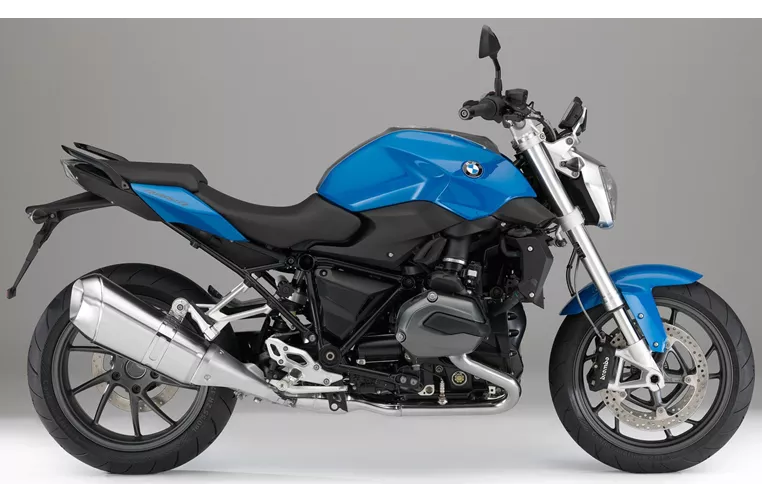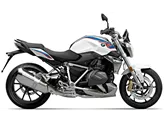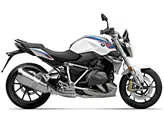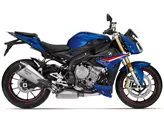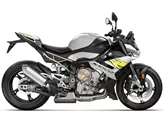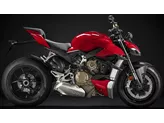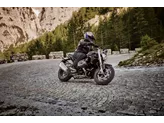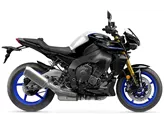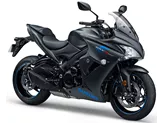BMW R 1200 R 2015 vs. BMW S 1000 R 2015

BMW R 1200 R 2015

BMW S 1000 R 2015
Overview - BMW R 1200 R 2015 vs BMW S 1000 R 2015
The BMW R 1200 R 2015 and the BMW S 1000 R 2015 are both naked bikes, but they have some key differences in their technical specifications.
In terms of engine power, the BMW S 1000 R 2015 has a clear advantage with 160 HP compared to the BMW R 1200 R 2015's 125 HP. This extra power gives the S 1000 R a more thrilling and dynamic riding experience.
However, the BMW R 1200 R 2015 compensates for its slightly lower power with a higher torque of 125 Nm compared to the S 1000 R's 112 Nm. This means that the R 1200 R has better low-end power and acceleration.
The engine types also differ between the two models. The R 1200 R has a Boxer engine with 2 cylinders, while the S 1000 R has an In-line engine with 4 cylinders. This difference in engine configuration can affect the overall performance and feel of the bike.

BMW R 1200 R 2015
In terms of suspension, the R 1200 R has a telescopic fork in the front and a Paralever suspension in the rear. On the other hand, the S 1000 R features an Upside-Down telescopic fork in the front and a swing arm suspension in the rear. The S 1000 R's suspension setup is more advanced and offers better handling and stability.
The chassis of the R 1200 R is made of steel and has a load-bearing engine frame type. In contrast, the S 1000 R has an aluminum frame with a twin tube design. The aluminum frame provides a lighter weight and better maneuverability for the S 1000 R.
Both bikes have double disk brakes with four pistons and radial technology in the front. This ensures powerful and responsive braking performance for both models.

BMW S 1000 R 2015
In terms of dimensions and weights, the R 1200 R has a wider front tire at 120 mm compared to the S 1000 R's 120 mm. The rear tire of the R 1200 R is also wider at 180 mm compared to the S 1000 R's 190 mm. The wheelbase of the R 1200 R is longer at 1515 mm, while the S 1000 R has a shorter wheelbase of 1439 mm. The seat height of the R 1200 R is lower at 790 mm, making it more accessible for shorter riders compared to the S 1000 R's 814 mm seat height. The R 1200 R is also heavier with a kerb weight of 231 kg compared to the S 1000 R's 207 kg. However, the R 1200 R has a larger fuel tank capacity of 18 liters compared to the S 1000 R's 17.5 liters.
In terms of strengths, the R 1200 R has a sporty look, a powerful engine, and a comfortable seating position. It also comes with ABS and traction control as standard, as well as two riding modes. On the other hand, the S 1000 R has a powerful and well-controllable engine, a powerful braking system, and a comparatively comfortable seating position.
However, both models have their weaknesses. The R 1200 R has many cool features that are only available at an extra cost, and its rev counter is poorly readable. The S 1000 R has irresistible but expensive optional extras, a hard chassis, and vibrations in the handlebars.
In conclusion, the BMW R 1200 R 2015 and the BMW S 1000 R 2015 are both impressive naked bikes with their own unique strengths and weaknesses. The R 1200 R offers a sporty look and a comfortable riding experience, while the S 1000 R provides a more thrilling and dynamic performance. Ultimately, the choice between the two will depend on the rider's preferences and priorities.
Technical Specifications BMW R 1200 R 2015 compared to BMW S 1000 R 2015
Pros and Cons in comparison
Pros and Cons in comparison
BMW R 1200 R 2015
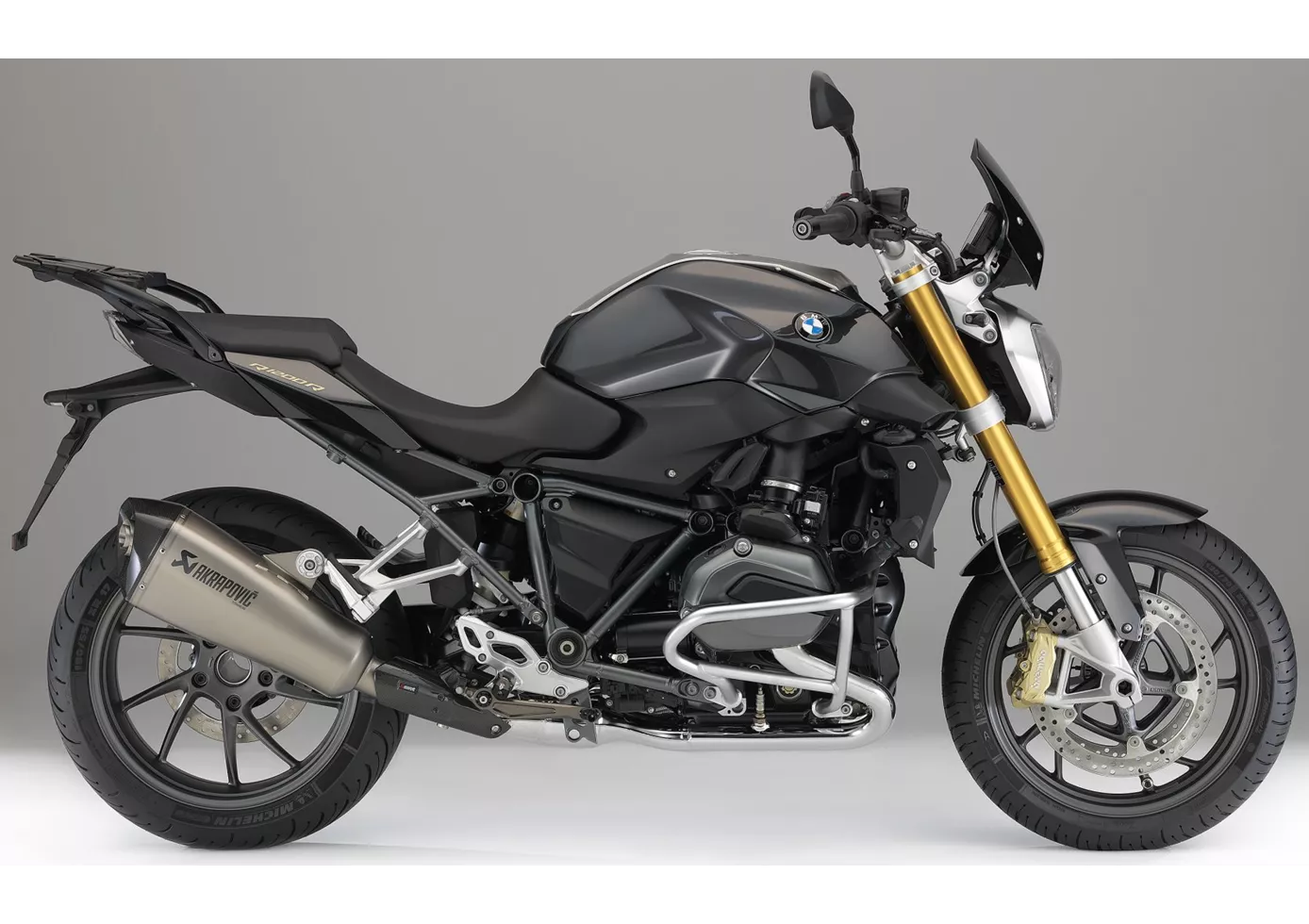
The predecessor was already able to be ridden in a sporty manner as well as convincing on tours, the new R 1200 R can do even more - thanks to the pannier system (of course at extra cost), travelling is still no problem, but it masters sport even better. Thanks to the now partially water-cooled boxer twin-cylinder engine, it is wonderfully agile - 125 hp may not seem like much on paper, but the engine pushes incredibly and behaves in a cultivated manner to boot. The chassis and brakes also score highly and the seating position is sporty and upright, covering a wide spectrum from wonderful fun to long-distance touring. Unfortunately, BMW also understands the trick with the surcharge list perfectly. The basic model is well equipped with ABS that can be deactivated, traction control that can also be deactivated and two driving modes, but many interesting gimmicks are almost obligatory - and of course drive the price way up.
BMW S 1000 R 2015

With the BMW S 1000 R, you notice both the close relationship to the S 1000 RR superbike and the endeavour to equip the machine with a high degree of comfort for country roads and everyday use. Accordingly, the 1000cc four-cylinder power unit is brute and yet easily controllable, and the seating position is correspondingly sporty and comfortable. The fact that the S 1000 R is one of the most affordable power naked bikes is surprising and very pleasing, although one must not get hold of the list of optional extras - because thanks to the many irresistible features, it will certainly be more expensive.
Price Comparison Avarage Market Price BMW R 1200 R vs BMW S 1000 R
There are a few key differences between a BMW R 1200 R 2015 and a BMW S 1000 R 2015. In terms of price, the actual average price of a BMW R 1200 R 2015 is about 4% higher. A BMW R 1200 R 2015 experiences a loss of 980 USD in one year and 620 USD in two years of ownership. This is offset by a loss of 250 USD and 600 USD for a BMW S 1000 R 2015. Compared to BMW S 1000 R 2015 there are more BMW R 1200 R 2015 bikes available on the 1000PS.de Marketplace, specifically 23 compared to 12. It takes less time to sell a BMW S 1000 R with 61 days compared to 69 days for the BMW R 1200 R. Since model year 2007 1000PS.de editors have written 27 reviews for the BMW R 1200 R and 62 reviews for the BMW S 1000 R since model year 2014. The first review for the BMW R 1200 R was published on 7/7/2006 and now has more than 14,900 views. This compares to more than 17,300 views for the first review on BMW S 1000 R published on 11/3/2013.
